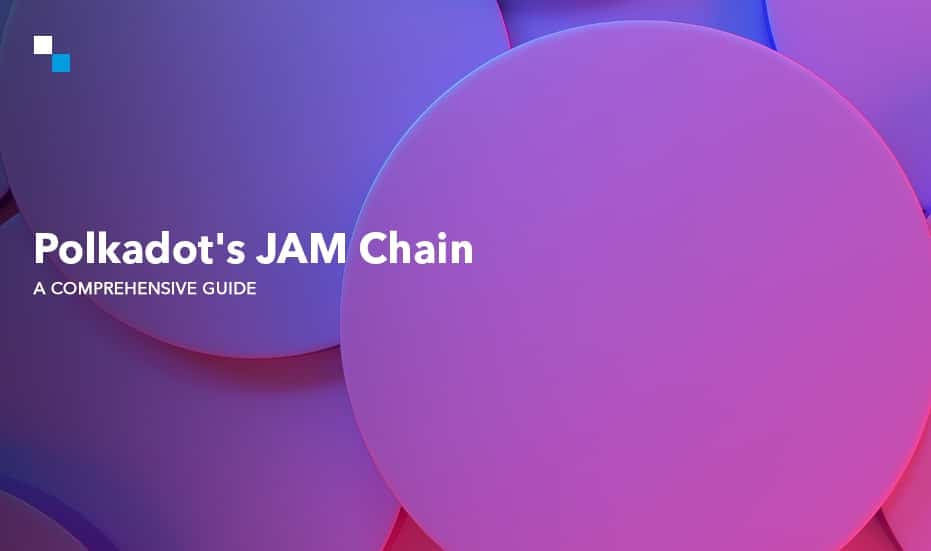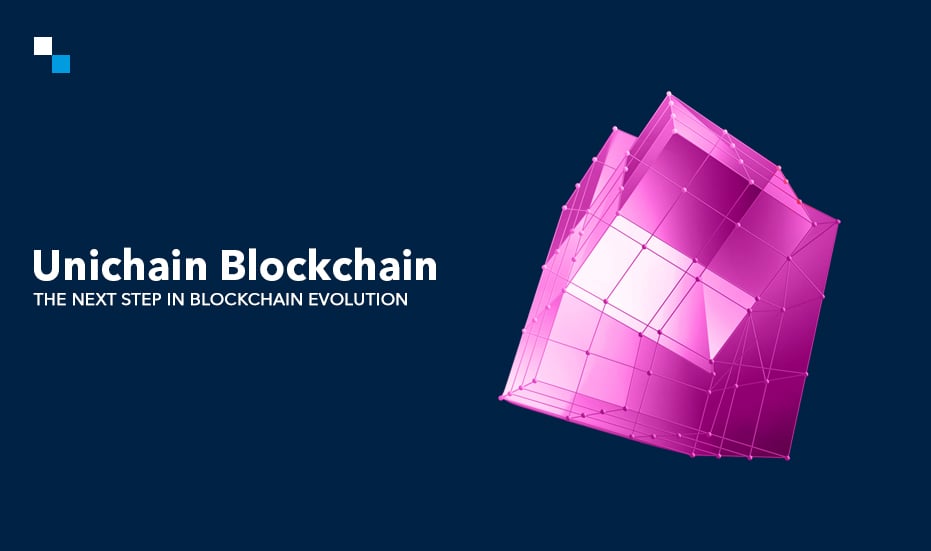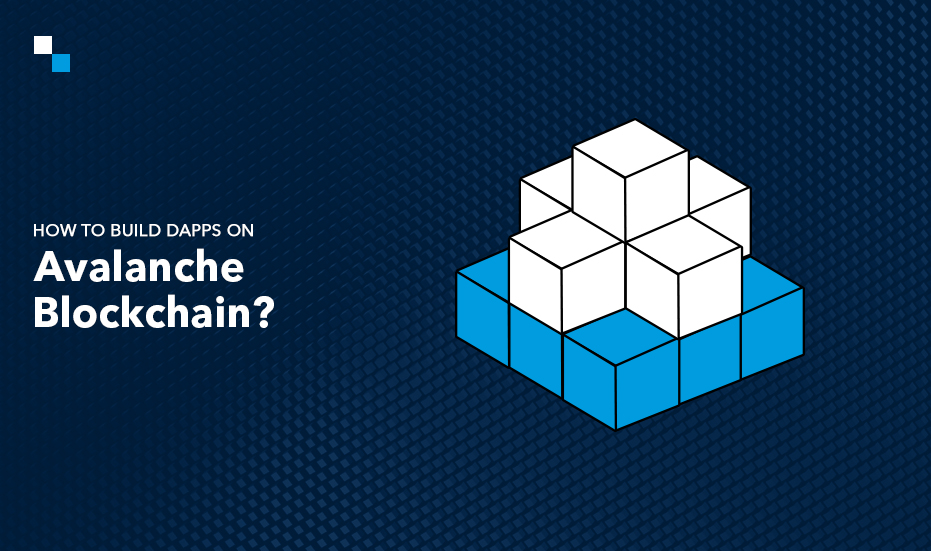
Demystifying Bitcoin Taproot Upgrade: A Comprehensive Guide
May 21, 2024
8 Key Considerations For Grid Trading Bot Development
May 21, 2024Gavin Wood’s decision to launch Polkadot after Ethereum stemmed from a vision to address critical limitations and challenges within the blockchain space. While Ethereum operates on a single-layer structure that can become a bottleneck during high-demand periods, Polkadot utilizes a unique multi-chain architecture to facilitate seamless communication and data sharing between blockchains.
Polkadot’s ecosystem, with its relay chain, parachains, and bridges, offers a modular, interconnected approach that enables more customized & efficient blockchain deployments. However, the current relay chain architecture has some limitations in handling a massive amount of transactions.
During TOKEN2049 Dubai, Gavin Wood revealed an ambitious vision for the future of Polkadot technology. Central to this vision is JAM Chain: A potential successor to Polkadot’s existing relay chain architecture designed to improve the platform’s capabilities and embrace new possibilities in the evolving Web3 ecosystem.
This blog sheds light on an in-depth analysis of why Polkadot’s JAM Chain, a project initiated by Parity Technologies, would be the next disruptor in web3 and how it will open new doors of opportunities for developers and entrepreneurs in the crypto landscape.
Table of Contents
-
- Polkadot’s JAM Chain: An Overview
- JAM’s Role in Managing Rollups
- JAM’s Resemblance with Smart Contract Chain
- JAM Chain vs. Relay Chain: The Difference
- Prominent Components of JAM
- JAM Chain’s Revolutionary Benefits
- How JAM and Substrate Can Improve Blockchain Performance?
- JAM Toaster: How it Will Set New Benchmarks in Blockchain Testing
- JAM Prize
- Conclusion
- FAQs
Polkadot’s JAM Chain: An Overview
Gavin Wood on JAM: sub0 Asia 2024
“JAM,” an acronym for “Join-Accumulate Machine,” encapsulates the foundational principles of a computational model soon to be implemented on the JAM chain. Originally derived from CoreJAM i.e. Collect, Refine, Join, Accumulate, JAM represents a novel approach aimed at surpassing the existing relay chain with a design that significantly enhances the scalability and efficiency of decentralized computations.
Key to the JAM architecture is its selective execution strategy, where the “Collect” & “Refine” functions are managed off-chain, and only the “Join” & “Accumulate” functions are executed on-chain. The JAM model, explained in a comprehensive graypaper, proposes a radical shift in blockchain architecture. It separates computation into two distinct layers: An off-chain “Refine” layer for parallel, complex data processing, and an on-chain “Accumulate” layer that verifies and integrates these computations into a unified state.
The primary objective of JAM is to provide an efficient framework for data management and computational tasks within a network while enhancing data integration & maintaining high standards of network integrity and security.
JAM’s Role in Managing Rollups
JAM offers a more flexible and adaptable approach compared to restricted domain-specific chains like Polkadot’s relay chain when it comes to managing rollups. It integrates outputs from roll-ups into a cohesive state while ensuring that these computations are accurately reflected in the final output.
Traditionally, web3 developers faced a choice between developing smart contracts on Layer 1 solutions which are quicker to deploy but often suffer from inefficiencies and limited flexibility, or building bespoke application-specific blockchains which offer greater control and efficiency but require more resources.
JAM disrupts this paradigm by integrating the high scalability typically associated with rollups directly into its consensus layer. This innovative approach eliminates the traditional trade-offs between smart contracts & appchains and provides developers with a more powerful & flexible environment that supports a wide range of applications.
With JAM, developers gain the scalability of Layer 2 solutions without the need for separate rollup technologies, coupled with the freedom to build any application tailored to their specific needs.
JAM’s Resemblance with Smart Contract Chain
JAM shares several resemblances with a smart contract chain. Firstly, it allows permissionless code execution directly on its chain. Secondly, the state of the JAM chain is organized into distinct encapsulations. These encapsulations, also known as services, encompass code, balance, and specific state components. Much like deploying a smart contract on a smart contract chain, the creation of a new service on JAM is permissionless.
Unlike Substrate-based chains, which typically require governance approval for adding new pallets, JAM does not necessitate approval from any authority or adherence to governance mechanisms when adding a new service. This architecture mirrors the structure commonly observed on a smart contract chain, where services represent partitions of the state, each containing code, balance, and relevant state components.
JAM Chain vs. Relay Chain: The Difference
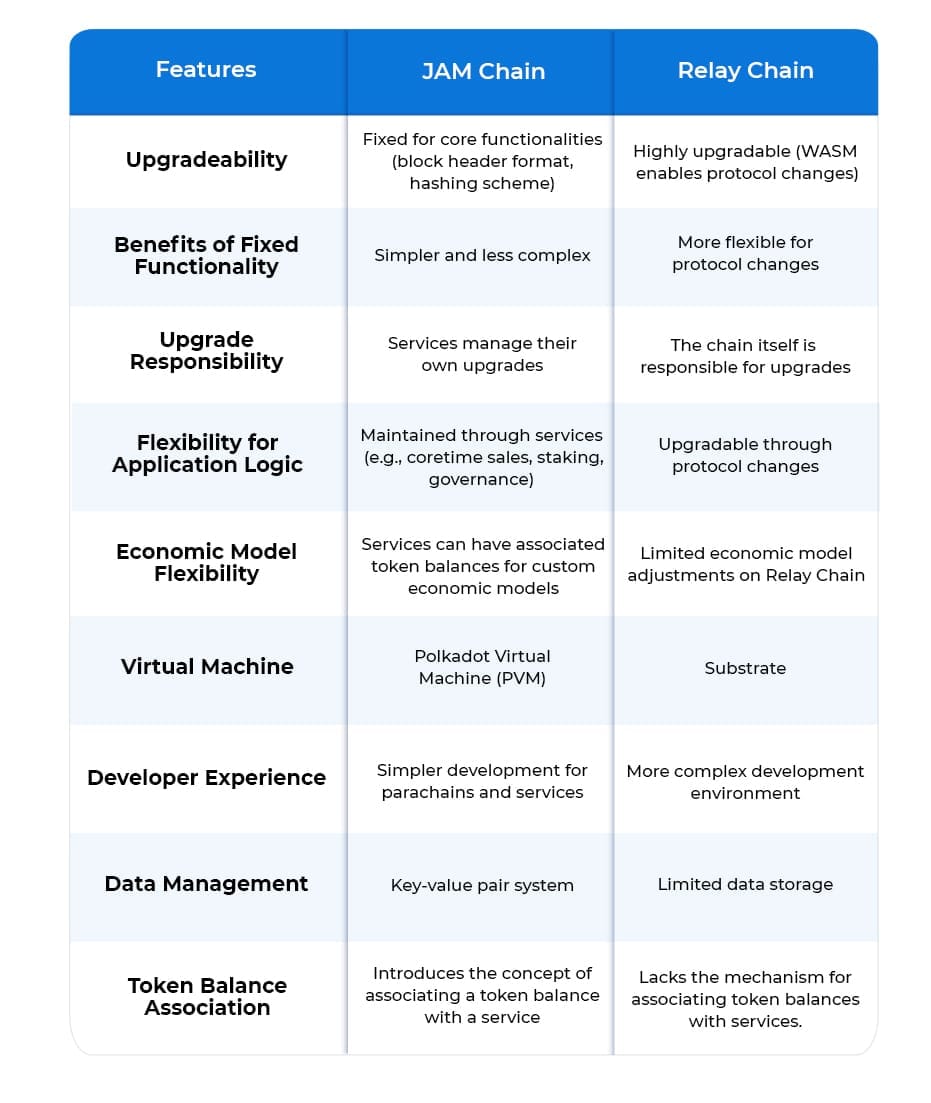
Prominent Components of JAM
The components of Polkadot’s JAM Chain can be broadly categorized into two sections: Service Entry Points & Core Functionality Components
Service Entry Points
JAM Chain offers the following three key service entry points which collectively govern the data processing and integration workflow within the network:
Refine: This function deals with stateless computations. It defines the transformations needed for specific rollup services on JAM. Essentially, it prepares the data for further processing.
Accumulate: This function takes the refined output from the “Refine” stage and folds it into the overall service state. Imagine it as accumulating the results of computations.
OnTransfer: This service entry point handles information received from other services within the JAM system. It facilitates communication and data exchange between different services running on JAM.
In JAM, work packages serve as inputs to services, containing multiple work items. Each work item is associated with a service that reflects its specific input. For parachains, these work packages encompass transactions and other blockchain inputs.
JAM’s security framework operates through a two-stage process: Refine accepts work items and produces work results, subsequently passed to Accumulate. This sequence ensures that work items are refined into coherent work results and reflects the outcomes of multiple items within a package. Work packages may be assigned to utilize specific cores during designated time slots to optimize resource allocation.
 Img Source: rb.gy/av8mpb
Img Source: rb.gy/av8mpb
Core Functionality Components
PVM(Polkadot Virtual Machine)
Built upon the foundation of the RISC-V ISA (Instruction Set Architecture), the Polkadot Virtual Machine leverages simplicity and versatility. The RISC-V ISA’s advantages include ease of transpilation into widely used hardware formats such as x86, x64, and ARM, along with robust tooling support like LLVM. The PVM prioritizes simplicity and security while offering sandboxing capabilities and various execution guarantees.
Unlike other virtual machines, the PVM avoids excessive opinionation and addresses challenges associated with WebAssembly (WASM) stack management by placing the stack in memory. The incorporation of RISC-V-enabled continuations sets a new standard for scalable coding across multi-core platforms like JAM, aligning with the trend towards asynchronous, parallelized architectures essential for scalability in blockchain and consensus algorithms.
SAFROLE
SAFROLE, a block production algorithm, simplifies the SASSAFRAS model by excluding components less relevant to parachains. While SAFROLE may lack certain features useful for parachains, its minimalistic design maximizes future use cases and encourages broad implementation akin to the Ethereum yellow paper. SAFROLE utilizes SNARKs for anonymity features, enabling constant-time block production with minimal forking potential, primarily occurring during net splits or malicious behavior. Anonymity serves to secure the block production mechanism rather than conceal validator identities, enhancing overall system security and mitigating spam risks.
Networking
JAM’s networking protocol adopts the QUIC protocol to enable direct point-to-point connections among a large number of validators without socket-related issues. Gossip is unnecessary as JAM does not handle transactions. For broader distribution among validators, grid-diffusal organizes validators into a grid and facilitates efficient package distribution by rows and columns.

JAM Chain’s Revolutionary Benefits
Simplified Deployment for Developers
JAM Chain streamlines the deployment process for developers, significantly reducing development complexity compared to existing parachain models. Developers only need to specify specific functions such as Refine, Accumulate, and onTransfer to get their services up and running swiftly. This enhanced simplicity accelerates development cycles and allows developers to focus more on innovation and less on technical intricacies.
Transactionless Environment
One of the groundbreaking features of JAM Chain is its introduction of a transactionless ecosystem. Unlike traditional blockchain setups, JAM operates without transactions, ushering in a new paradigm for blockchain interactions. Applications deployed on the platform handle transactions initiated by users and offer functionalities beyond traditional blockchain transactions. This transactionless environment ensures seamless operation, with apps running continuously as long as they are provided with DOT to operate.
Enhanced Security and Information Handling
Despite its transactionless nature, JAM Chain effectively accommodates extrinsic information in a specific format while ensuring robust security and information handling. The platform incorporates several types of extrinsic information- guarantees, assurances, judgments, preimages, and tickets—as integral elements of its security architecture. Guarantees and assurances require validators to jointly verify the correctness of work results. Judgments are used to evaluate the reliability of work results that are deemed uncertain. Preimages allow for stateful operations to occur within the refine function, and tickets facilitate anonymous participation in block production, thereby strengthening the chain’s overall security and integrity.
Efficient Block Processing with Pipelining
JAM Chain introduces a novel approach to block processing by leveraging pipelining for enhanced efficiency. Unlike traditional blockchains where computations must be completed before sending the header, JAM adopts a different strategy by placing the prior state root in the header. This allows lightweight computations to be executed before distributing the block, maximizing time utilization between blocks. The innovative pipelining approach ensures efficient block processing, significantly improving effective block computation time compared to traditional setups.
Generalization and Flexibility
JAM Chain represents a notable shift away from the rigid structures often present in current blockchain frameworks, providing higher levels of abstraction and adaptability. By functioning in a permissionless manner similar to smart contract chains, JAM facilitates smooth uploading and execution of code by users. Moreover, it serves as a repository for data, facilitates preimage lookup, and oversees state management, resembling a dynamic key-value pair system. Within the JAM ecosystem, service functionalities are not constrained by preset boundaries but are instead influenced by crypto-economic factors, fostering a wide array of potential applications and customization options.
How JAM and Substrate Can Improve Blockchain Performance?
Here are some advantages offered by the amalgamation of JAM and Substrate:
Optional Benchmarks
In the realm of JAM, the necessity for benchmarks or performance tests is significantly reduced, thanks to its sophisticated metered system. This system evaluates the computational workload post-execution, thereby streamlining the process and reducing the frequency of benchmarks. Although benchmarks may still be utilized for performance enhancement or in scenarios where tasks exceed typical execution times, JAM’s system generally mitigates the need for extensive benchmarking.
XCMP(Cross-Chain Message Passing)
JAM mandates comprehensive support for XCMP to ensure efficient data handling across parachains. This requirement arises from the strict data transmission rules within the relay chain, where JAM ensures that only essential data is communicated, enhancing performance and security. The introduction of XCMP, where message headers are processed on-chain and the bulk of data off-chain, addresses the need for more robust and scalable data transmission mechanisms.
Streamlined Accords Implementation
Accords in JAM serve as flexible constructs similar to smart contracts, allowing synchronous interactions and state management across parachains. This functionality facilitates direct exchanges like token transfers without relying on intermediaries, thereby maintaining trust and integrity within the ecosystem. Accords also enhance message forwarding capabilities, ensuring reliable communication across multiple parachains.
Resource Optimization and Cost Efficiency
JAM’s broad and adaptive approach to consensus mechanisms supports a wide array of innovative and complex operations, such as zero-knowledge proofs. By enabling a mixed-resource consumption model, JAM allows the combination of computationally intensive and data-heavy tasks within the same work packages. This integration not only maximizes the utility of validators’ resources but also drives down operational costs by optimizing workload distributions.
JAM Toaster: How it Will Set New Benchmarks in Blockchain Testing
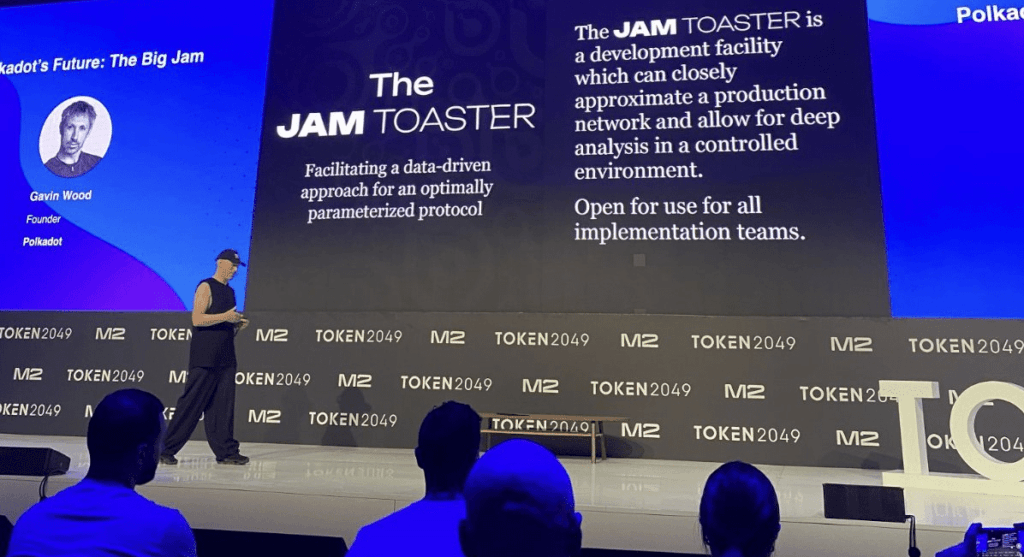
Img Source: https://rb.gy/2exuu8
To ensure the JAM chain meets its ambitious performance and reliability targets, a substantial effort has been made to establish a superior testing framework known as the JAM Toaster. This dedicated testing platform is strategically developed to conduct extensive, large-scale trials and performance assessments, setting it apart from smaller-scale test networks that often suffer from limited capabilities and unreliable hardware.
The JAM Toaster is not just a testing environment but a comprehensive ecosystem capable of hosting the entirety of JAM chain operations. It includes a full array of 1,023 nodes, enabling detailed research into network behavior and performance under various conditions. This platform is designed to overcome the limitations previously experienced in blockchain development, such as those encountered with the Polkadot Relay Chain and the Kusama network. Previous testing frameworks typically relied on a constrained number of nodes or were hampered by restricted access to essential network components like validator nodes, which limited their effectiveness and the realism of their simulations.
With the JAM Toaster, developers can engage in testing, observation, analysis, scaled-trials, experimentation, and research in a controlled yet expansive environment that mimics real-world operations across an entire network. This approach allows for a deeper understanding of the emergent dynamics and potential challenges of operating a large-scale blockchain network, providing invaluable insights that drive the refinement and optimization of the JAM chain. By bridging the gap between theoretical design and practical implementation, the JAM Toaster ensures that developers have a clear and accurate expectation of parachain performance, thereby enhancing the reliability and scalability of blockchain solutions offered to businesses.
JAM Prize
JAM Prize, backed by the Web3 Foundation, serves as a significant initiative to foster innovation within the blockchain space. With a substantial endowment of 10 million DOT, this prize aims to spur the development and implementation of the JAM protocol by incentivizing developers to explore various avenues of integration. By offering rewards across different tiers and programming languages, the JAM Prize encourages a diverse range of implementations, thereby enriching the functionality and versatility of the JAM network. Its overarching goal is to ensure the proliferation of robust implementations of the JAM protocol while cultivating a pool of expertise within the community.

Conclusion
JAM represents a monumental leap forward in blockchain scalability and performance, guided by Dr. Wood’s visionary leadership and expertise. While challenges lie ahead, the transformative impact of JAM on the Polkadot ecosystem and the broader blockchain community is undeniable. With its pivotal role in managing rollups, resemblance to smart contract chains, and distinct differences from the relay chain, JAM stands poised to redefine the landscape of Web3.
Whether you’re seeking consultation, implementation support, or custom development services, Antier, a leading layer 2 Blockchain development company, stands ready to support businesses and developers in harnessing the full potential of JAM and other innovative blockchain solutions.
FAQs
- How does JAM differ from traditional blockchain networks?
JAM is designed as a distributed computer that is capable of running various tasks expressed as services. Unlike traditional blockchains, JAM’s chain itself carries minimal functionality with no user transactions directly on-chain.
- Is Agile Coretime part of the Polkadot ecosystem?
Yes, Agile Coretime will soon be integrated into Polkadot and subsequently available on JAM.
- What is JAM’s primary goal?
To provide a flexible and efficient framework for data and computation management, ensuring network integrity and security.
- How is JAM related to Polkadot?
JAM is designed to evolve the Polkadot Relay Chain, allowing flexible addition of services compatible with the parachain protocol.
- How can developers get involved with JAM?
Developers can engage with JAM post-RFC release and stay informed via Parity’s updates and community forums.
- What is the role of DOT in JAM?
DOT continues as JAM’s native token, with no new native tokens being issued.
- Where can I learn more about JAM?
For detailed information, visit the JAM Chain page, explore graypaper.com, or get in touch with Polkadot experts at Antier.
